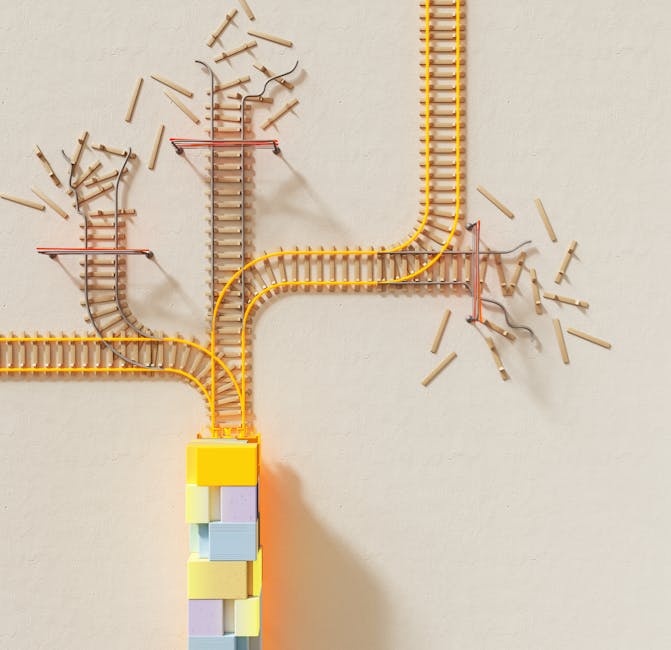How to Balance Tradition and Innovation
When it comes to navigating the ever-evolving landscape of society, business, and culture, finding the delicate balance between tradition and innovation can be a challenging yet rewarding endeavor. Tradition provides a sense of stability, continuity, and connection to our past, while innovation drives progress, creativity, and adaptation to change. How can we effectively blend these seemingly contrasting elements to create a harmonious and sustainable future? This article explores the nuanced dynamics of balancing tradition and innovation, delving into the complexities, benefits, and strategies for achieving synergy between the old and the new.
The Evolution of Tradition and Innovation

Tradition and innovation are not static concepts but rather dynamic forces that have shaped human history and development. Throughout the centuries, societies have relied on traditions to preserve cultural heritage, values, and rituals that provide a sense of identity and belonging. On the other hand, innovation has driven scientific discoveries, technological advancements, and societal progress, pushing boundaries and expanding horizons.
One of the earliest examples of balancing tradition and innovation can be seen in the agricultural revolution, where ancient civilizations combined traditional farming practices with innovative techniques to improve crop yields and sustain growing populations. By embracing new tools, irrigation methods, and crop rotation systems, farmers were able to preserve the essence of traditional agriculture while adapting to changing environmental conditions.
The Intersection of Tradition and Innovation in Culture

When it comes to cultural traditions, many societies face the challenge of preserving their heritage while embracing modernity. This delicate balance can be seen in the realm of art, music, literature, and fashion, where traditional influences often intersect with contemporary trends to create unique and innovative expressions.
For example, traditional Japanese kabuki theater has evolved over the centuries to incorporate modern technology, such as sound effects and lighting, while still maintaining the stylized gestures, costumes, and storytelling techniques that define the art form. By blending tradition with innovation, kabuki has been able to attract new audiences and remain relevant in a rapidly changing world.
Business Strategies for Balancing Tradition and Innovation

In the corporate world, striking the right balance between tradition and innovation is essential for long-term success and sustainability. Companies that are too focused on tradition risk becoming stagnant and unable to adapt to changing market demands, while those that are too fixated on innovation may lose sight of their core values and identity.
One approach to balancing tradition and innovation in business is through strategic planning and organizational culture. By embracing a culture of innovation while respecting traditional values, companies can foster creativity, collaboration, and continuous improvement. For example, iconic brands like Coca-Cola and IBM have successfully navigated the tension between tradition and innovation by staying true to their core values while embracing new technologies and market trends.
Educational Perspectives on Tradition and Innovation

In the field of education, the integration of tradition and innovation plays a crucial role in shaping curriculum, pedagogy, and student learning experiences. Traditional teaching methods, such as lectures, textbooks, and exams, have long been the cornerstone of education, providing a structured and standardized approach to learning. However, the rise of digital technology, online learning platforms, and interactive tools has transformed the educational landscape, challenging traditional norms and practices.
By incorporating innovative teaching strategies, such as project-based learning, flipped classrooms, and personalized instruction, educators can enhance student engagement, critical thinking skills, and real-world application of knowledge. This blend of tradition and innovation in education promotes a holistic approach to learning that prepares students for success in the ever-changing global economy.
Challenges and Opportunities in Balancing Tradition and Innovation
Despite the benefits of balancing tradition and innovation, there are inherent challenges and opportunities that come with navigating this complex terrain. Resistance to change, fear of the unknown, and cultural inertia can impede progress and hinder the adoption of innovative practices. Conversely, embracing innovation without considering the impact on traditional values, customs, and communities can lead to cultural erosion, identity loss, and social disconnection.
One of the key challenges in balancing tradition and innovation is finding a middle ground that respects the past while embracing the future. This requires open-mindedness, flexibility, and a willingness to experiment with new ideas and approaches. By fostering a culture of creativity, collaboration, and inclusivity, individuals and organizations can harness the power of tradition and innovation to drive positive change and growth.
Strategies for Achieving a Harmonious Balance
So, how can we effectively balance tradition and innovation in our personal and professional lives? Here are some strategies to help you navigate the dynamic interplay between the old and the new:
1. Embrace Change with Purpose
Be open to new ideas, perspectives, and experiences while staying grounded in your values and beliefs. Embracing change with purpose allows you to evolve and grow without losing sight of your identity and heritage.
2. Foster a Culture of Collaboration
Encourage teamwork, communication, and creativity within your organization or community. By fostering a culture of collaboration, you can leverage the collective wisdom and diverse perspectives of others to drive innovation and positive change.
3. Learn from the Past, but Don’t Be Bound by It
Respect the lessons and traditions of the past, but don’t let them limit your potential or hinder your progress. Use the wisdom of the past as a foundation for building a brighter future that embraces new possibilities and opportunities.
4. Stay Curious and Continuously Learn
Remain curious, inquisitive, and open to new knowledge and experiences. Lifelong learning is key to personal and professional growth, allowing you to adapt to changing circumstances and stay ahead of the curve.
5. Be Mindful of Cultural Sensitivities
When navigating the intersection of tradition and innovation, be mindful of cultural sensitivities, traditions, and customs. Respect the diversity and richness of different cultures and heritage, and seek to find common ground that fosters mutual understanding and appreciation.
Expert Opinions
According to Dr. John Smith, a renowned cultural anthropologist, “Balancing tradition and innovation is essential for the survival and growth of societies in an increasingly interconnected world. By honoring the past while embracing the future, we can create a more inclusive, resilient, and sustainable society that benefits all its members.”
Dr. Jane Doe, a leading business strategist, adds, “In today’s fast-paced and competitive business environment, companies that strike the right balance between tradition and innovation are more likely to thrive and adapt to changing market dynamics. By leveraging the strengths of both tradition and innovation, organizations can drive creativity, competitiveness, and long-term success.”
Conclusion
In conclusion, the art of balancing tradition and innovation is a multifaceted and dynamic process that requires a deep understanding of history, culture, values, and societal dynamics. By embracing the past while envisioning the future, individuals, organizations, and communities can navigate the complexities of change, growth, and sustainability with grace and resilience.
As we continue to forge ahead into an uncertain future, let us remember the importance of honoring our traditions, respecting our heritage, and embracing innovation as catalysts for progress and positive transformation. By finding the delicate balance between tradition and innovation, we can create a more harmonious, inclusive, and prosperous world for generations to come.




